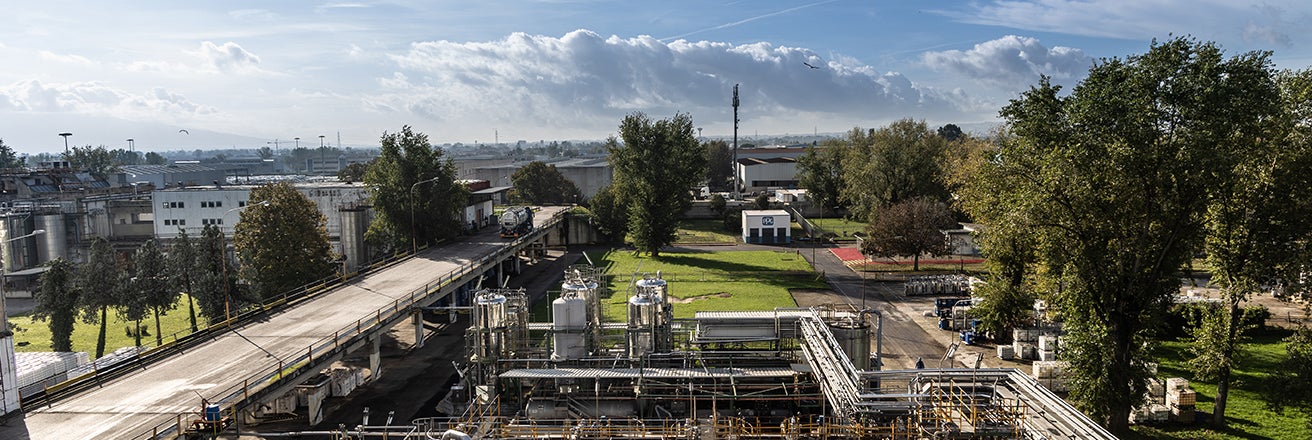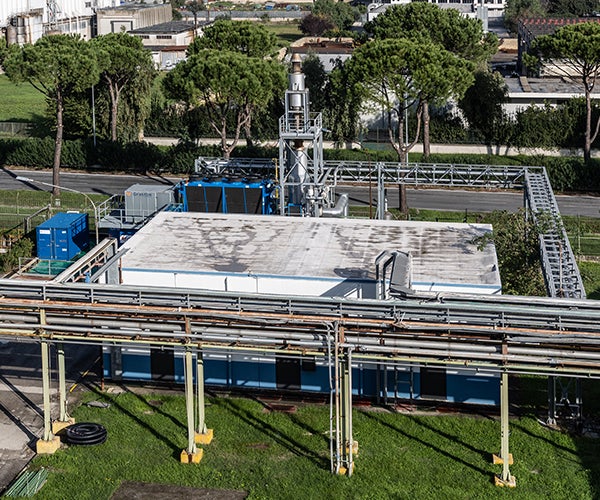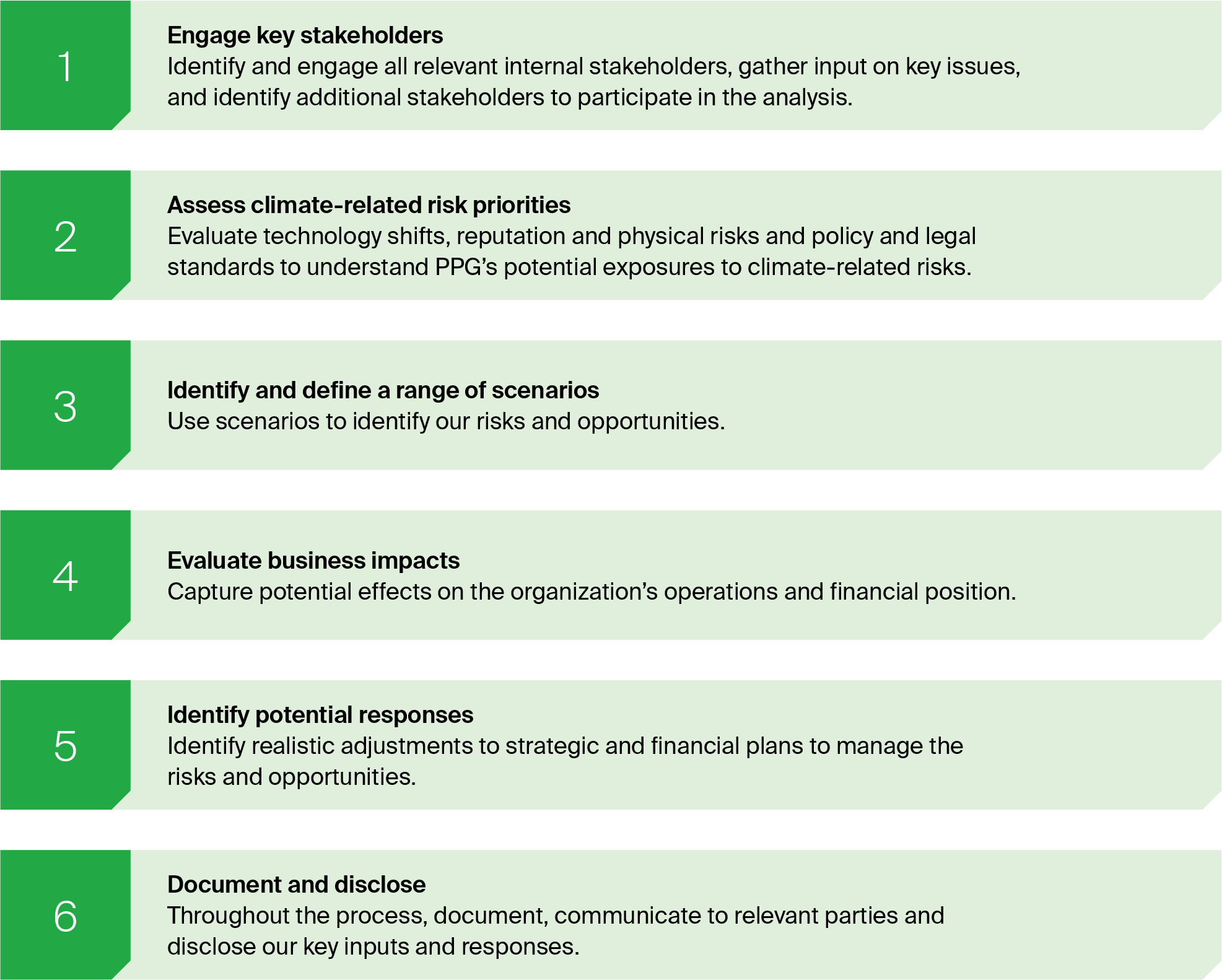PPG has a rigorous approach to managing physical climate risk across our facilities. We undertake climate change scenario analysis, climate risk modeling and strategic planning based on guidance from the Task Force on Climate-related Financial Disclosures (TCFD). We utilized Climate Risk Assessment Methodology and evaluated 261 sites against six climate stressors: extreme heat, extreme seasonal precipitation, drought, flooding, high winds and sea level rise. From there, we identified 10 critical sites identified as higher risk. A detailed assessment then outlined site information, physical impacts to PPG property and equipment, and supply chain impacts. Based on the site’s risk profile, a list of capital improvement actions were incorporated into site plans to strengthen these operations against the impacts of climate change.
In 2024, PPG experienced a series of operational disruptions related to extreme weather, including flooding events in Brazil and Spain and hurricanes in Florida and Georgia. As physical climate risks intensify, we are investing in infrastructure improvements at our sites that are most threatened by climate change. For example, at facilities exposed to significant flood risk, we are elevating the positioning of critical electrical equipment to protect against flood damage.
Meeting market opportunities
PPG customers and users of our products are increasingly aware of climate impacts. We continue to see growth in the demand for lower carbon products across our businesses – from PPG DURANAR® ULTRA-COOL™ IR-reflective architectural coatings that combat the effects of high heat and lower the demand for air conditioning, to PPG Enviro-prime EPIC 300 which features an expanded bake window that reduces process emissions for our automotive customers. We foster partnerships with our customers and collaborate to develop new, more sustainably advantaged products.
We also have an established process that enables our sustainability team to work alongside PPG's businesses to identify market opportunities related to climate change impacts. Learn more in our research partnerships and sustainably advantaged products sections.
Climate-related regulations around the world
In 2024, we continued to track climate-related laws and regulations in the countries where we operate through our corporate risk management process, including state-level requirements in the U.S. and those regulations related to the EU Green Deal. We will continue to monitor emerging legislation that could impact our activities in the future.
Understanding nature-related risks and opportunities
PPG relies on natural capital across every aspect of our global business. We transform raw materials into high performing paints and coatings. In order to do so, we rely on a range of ecosystem services for everything from access to clean water to flood mitigation around our facilities.
We have a sophisticated understanding of the chemicals we use, and take responsibility for minimizing the environmental impacts from our products. As we continue to innovate new sustainably advantaged products, we also see opportunities to develop and scale bio-based and circular products and services. Moving forward, we are committed to advancing our understanding of nature-related impacts, dependencies, risks and opportunities in our operations and value chain. We are following the evolving work of standard setters to provide guidance in this area going forward.
For more detailed information about our ongoing approach to climate-related risks and opportunities, see the bottom of this web page.
To learn more about how PPG is addressing climate change, see our Task Force on Climate-related Financial Disclosure (TCFD) index on PPG.com.



